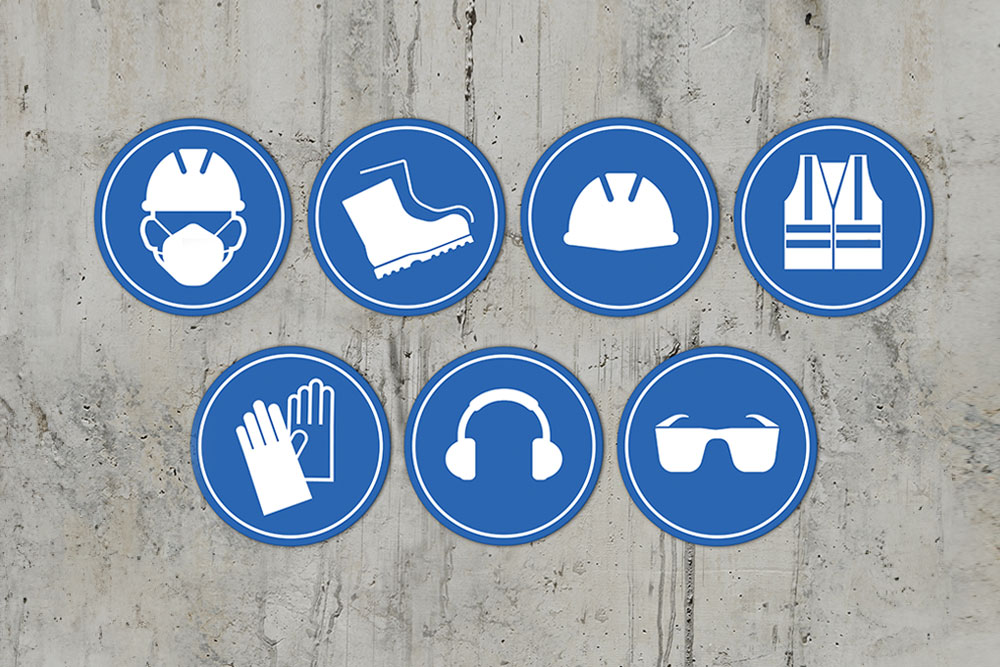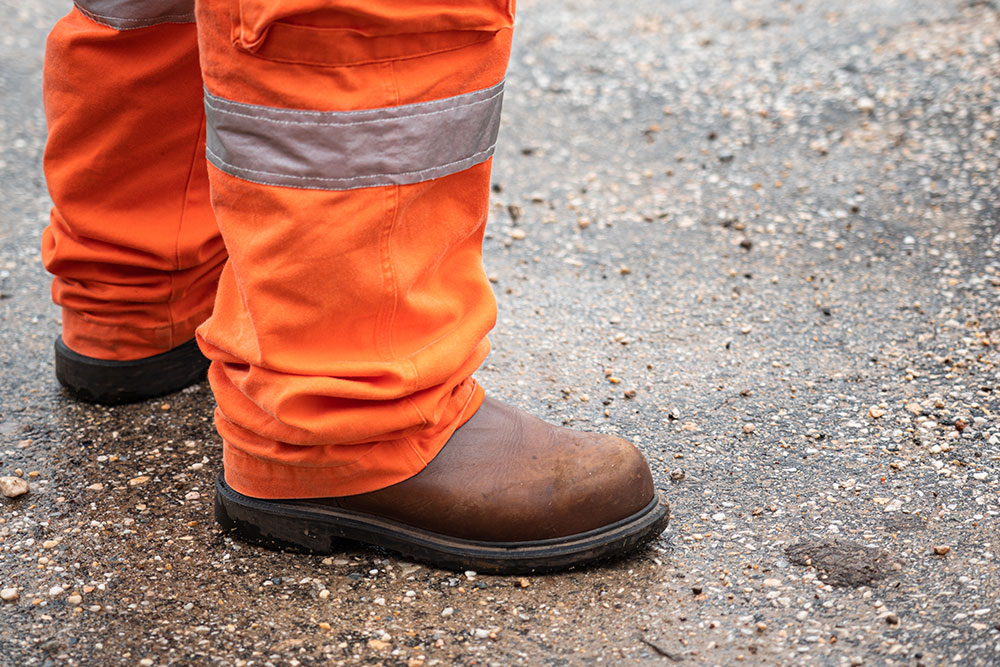
Before the COVID-19 pandemic, hardly anyone outside a few select industries had heard about Personal Protective Equipment. If you asked the average person on the street, ‘What does PPE stand for?’ they probably wouldn’t have been able to answer you. These days, we all know how personal protective equipment like gloves and masks can protect us. But what about other types of PPE at work? What is PPE in the workplace and why is it important?
There are various rules and regulations regarding Personal Protective Equipment (PPE) at work. The type you use, how you use it, how you store it and even who has to pay for it are all laid out in UK health and safety law. If you’re an employer, you have an obligation to provide adequate protection for your teams. If you’re an employee, you’ve got a responsibility to use PPE safely.
Personal Protective Equipment is a pretty big deal. That’s why we’ve put together this short guide on what PPE is and why it is essential you use it correctly.
What is PPE?
Every workplace has hazards. Some workplaces, of course, are more hazardous than others. A construction site, for instance, is a riskier workplace than a second-hand record store. When workplace hazards can’t be eliminated, we must use other means to mitigate or control them.
On a construction site, there’s always the risk of harm from falling objects. This can’t be avoided. While a second-hand record store might seem safe, harsh chemicals are often used to clean old albums. Also, it is an unavoidable part of the job.

When these health and safety risks can’t be avoided, Personal Protective Equipment is used to protect workers. It can be categorised as any wearable device or clothing that protects the wearer from harm. A construction worker will wear a hard hat to protect them from falling debris. A second-hand record store employee might wear a face mask and perhaps gloves to protect themselves from chemicals.
Why is Personal Protective Equipment Important?
Some forms of protective equipment are compulsory and legally mandated, like the construction worker’s hard hat. Other forms are best practices or common sense, like the record store employee’s face mask and gloves.
Regardless of whether or not the use of PPE is specifically outlined, all employers in the UK have to ensure that the workplace is safe for their employees. So, suppose a risk can’t be eliminated or controlled in another way. In that case, the employer is legally obligated to provide the employee with PPE and ensure they know how to use it properly.
PPE is considered the last defence against workplace risk. It is the last thing you should resort to. It’s designed to protect only the person wearing it. If they’re not wearing it correctly, haven’t taken good care of it, or it isn’t suitable, it won’t provide any protection.
Wearing protective equipment can ensure that employees can do their tasks safely without worrying about getting harmed. This helps to keep people safe and increases their productivity.
Real-Life Examples of Personal Protective Equipment in Action
The Covid-19 pandemic proved to everyone how valuable PPE can be. There are countless examples from across the globe about how it saves lives. Real-world examples include:
- A hard hat saved a 24-year-old man in Miami from being killed by a falling pulley weighing hundreds of kilos
- Arc flash gear saved a UK construction worker from severe burns when he drilled a jackhammer through an electrical cable
- Another UK man had his toes saved from being crushed because he was wearing steel-capped boots
- Every day, medical staff prevent the spread of disease by wearing PPE such as masks, gowns and gloves
In a tragic example of the consequences of not wearing PPE, a UK worker recently died working on a rail link site. Investigators determined that his death was directly caused by not wearing adequate PPE.
What Are the Different Types of PPE?
There are many different types of PPE. Disposal gloves, facemasks, hard hats, boots, aprons, respiratory apparatus, harnesses and shoe covers are all PPE.

The main types of protective equipment:
- Head Protection
- Hearing Protection
- Eye and Face Protection
- Respiratory Protection
- Hand Protection
- Body Protection
- Foot Protection
- Fall Protection
What Isn’t Classed as PPE?
Personal Protective Equipment has the specific purpose of preventing harm. Items that aren’t classed as PPE include:
- Everyday clothing or conventional uniforms
- Any clothing used to maintain food hygiene standards
- Equipment work for protection on public roads, for example, a motorcycle crash helmet
- Any offensive weapons used by professionals as a deterrent. For example, a police officer’s truncheon
- Any portable device used to prevent risk, such as a gas detector
How to Choose the Right PPE
Employers must provide Personal Protective Equipment for their employees if workplace risks can’t be eliminated or controlled in any other way. The use and provision of PPE is covered by UK health and safety legislation such as:
- The Personal Protective Equipment at Work (Amendment) Regulations 2022
- The Health and Safety at Work Act 1974 (HSWA)
- The Control of Substances Hazardous to Health (COSHH)
Complying with these laws means choosing the right type to use in the workplace.
An employer should first perform a thorough risk assessment of the workplace or have one performed by a competent person. The risk assessment will list all the hazards and what measures can be taken to eliminate or mitigate the risks posed by the hazards.
If PPE is required, it must provide suitable protection and carry the CE mark. This shows that it meets the minimum safety requirements.
Employers must ensure employees are fully trained to use, store and maintain PPE correctly. Before use, PPE should be visually inspected to ensure that it is in good condition. If required, employers must install PPE signs in the workplace. All PPE must be used in the manner for which it is intended. Employees should report any broken, malfunctioning or lost PPE immediately and not attempt to perform a task without it.
Can Employers Charge Employees for PPE?
Section 9 of the Health and Safety at Work etc Act 1974 states,
“No employer shall levy or permit to be levied on any employee of his any charge in respect of anything done or provided in pursuance of any specific requirement of the relevant statutory provisions.”
In non-legalese, employers cannot charge their employees for the protective equipment provided. This applies to single-use PPE, PPE that can be returned, and PPE provided to agency workers.
Employers can, however, set a budget for how much they are willing to spend on PPE. In some cases, this budget can be shared among several employees. Employers also have the right to ask their employees to clean or wash their PPE if necessary.
If you’re self-employed, you will need to provide your own PPE and pay for it yourself.
Learn More About PPE in the Workplace
Personal Protective Equipment can save lives. Employers and employees must understand PPE and why it is essential.
Sign up for our PPE Training course to fully understand Personal Protective Equipment at work.
It provides a thorough overview of the role of Personal Protective Equipment in the workplace and how to choose and use it correctly. The modules can be taken online whenever you like. Completing the course will earn you a downloadable certificate endorsed by the International Institute of Risk & Safety Management (IIRSM) and is recognised by industries across the UK.
Best of all, our PPE Training will ensure you stay on the right side of the law and safe at work. It’s perfect for people in all industries, from construction to selling second-hand records.




















































































































































































































































































































































































































































































































































































































































































































































